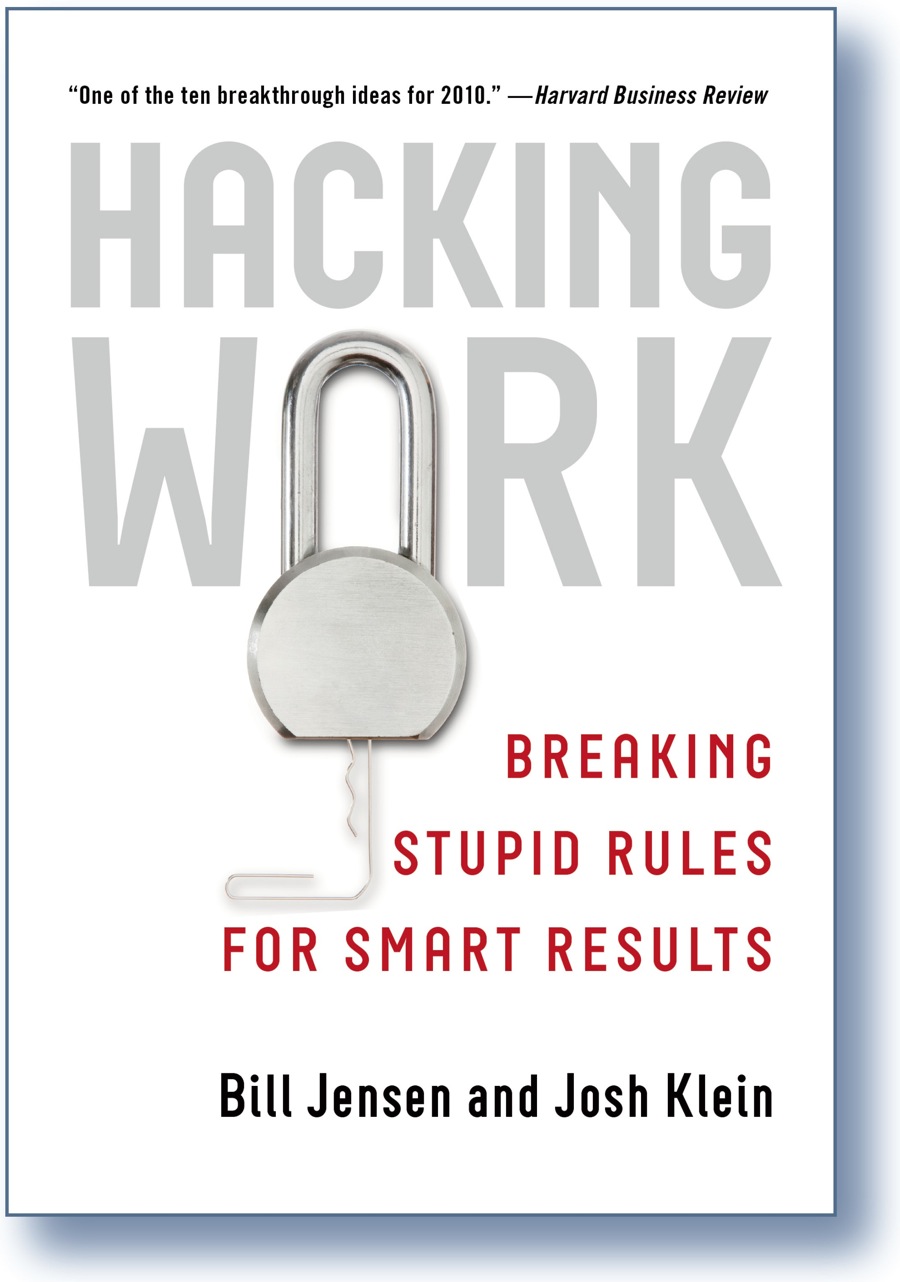Courtesy of Technotraps
Beleaguered employees can now leverage on a “cheat code” to streamline work and increase their productivity – without getting into trouble.
With the subtitle “Breaking Stupid Rules For Smart Results”, Hacking Work by Bill Jensen and Josh Klein encourages workers of all stripes to utilise “benevolent” hacking to get their jobs done more effectively and efficiently.
Unlike “Black Hat” hackers that attack company systems for profit and fun, benevolent hackers are ethical hackers. They are the ones who work around their own company policies, systems and processes to improve them, sometimes at their own personal expense.
Break Stupid Rules for Smart Results
Filled with a mixture of the “whys”, “whats”, “hows” and “whens” of corporate work arounds (with lots more useful stuff their well-appointed website here), Hacking Work encouraged readers to devise short-cuts that cuts the corporate crap present in most organisations.
According to the book, the tools and processes instituted in companies are often done in a top-down, corporate-centred fashion (as opposed to being user-centred). Unwittingly, they often inflict much grief on employees.
(I am sure all of you can attest to this – especially if you’ve spent any amount of time working in a big bureaucratic organisation.)
The solution is that you need to “break stupid rules for smart results”.
To do so, you should consider the two different types of hacks:
- Hard Hacks: Changes made to non-living systems and processes
- Soft Hacks: Changes made to working relationships or agreements with another person or group
Collectively, these workarounds circumvent bloated bureaucracies, antiquated and archaic systems, and dumb processes that “make our lives hell”.
The Top Five Work Hacks
According to the book, the top five hacks that we should at our workplaces are as follows:
- Hacking Our New Hire Process – a soft hack that is a “Negotiating the Deal” hack which ensures that we get sufficient leverage before signing on the dotted line. This is akin to a pre-nuptial agreement before your first day of work in order to give you leverage to optimize your eight hours.
- Hacking One Small Thing That Saps Our Energy – small quick wins that cut steps out of a procedure through work-arounds that improve efficiency.
- Hacking the Start of Every New Project – the start of a project is always a good place to build a successful career. Incorporate smart hacks to prevent stupidity from arising later.
- Hacking One Big Thing That Destroys Our Efficiency – this is the grander and perhaps riskier move. Go ahead. Kill that stupid procedure or tool that saps your efficiency.
- Hacking to Make the World a Better Place – the nirvana of hacking, where you change a form, process and tool, and share the hack with the world through public forums like HackingWork.com.
Anecdotes of Work Hackers
Throughout the book, you’ll read of examples of individuals who have saved themselves (and their organisations) by bypassing the usual traditional approaches.
An example was Matt. A middle manager working in a science museum, Matt used unauthorised tools like Google calendar for scheduling, Flickr for sending photos, wikis for collaboration and a self-made YouTube video for fundraising.
These worked far better than what his corporate office could dish out. They also made Matt a star – well perhaps a mini one – in his organisation.
Ideas to Save Bosses From Themselves
The most insightful chapter of the book titled “Dear Boss…” provided five big ideas for bosses to “save you from yourself”. Yes, you’ve read that right.
What are these impudent ideas?
- User-centric design moves from marketplace to workplace: Make it as easy for your people to do great work. Just as you do for your customers to buy your products.
- ROI gets personal: Your work contract must finally get real. Deliver value to your employees in return for their investment of effort and time in your organisation. If they have to sacrifice their family or leisure time in return, you’ll need to recognise that.
- Training and development becomes learner-centred: Develop each person in ways that work best for him or her to create amazing returns. Customise coaching and tailor training to meet individual needs.
- The org chart marries social network maps: Your leadership pipeline is democratised. In other words, the next guy you promote may be that part-timer with all the hacking and street smarts. Not just the 20 year veteran heading marketing.
- The art and science of clarity move from marketplace to workplace: Understand that not everybody knows how to communicate to everybody. That includes you the boss. You should thus learn how YouTube, Facebook, Google, blogs and Twitter succeeds in human communication.
Balancing Power, Control and Risk
Towards the end, the book turned philosophical and explained that it’s all really about “Power, Control and Risk”.
In a hacker’s world, these traditional corporate rules need to be overhauled. They should be skewed in favour of the employee as opposed to the executive or company.
Sacred cows and taboos would also need to be broken. They should allow any individual in the corporate food chain to find it easy to do great work, regardless of his or her position in the pecking order.
Clarion Call to Reinvent Work Practices
At times forceful and at times humourous, Hacking Work sounded a loud clarion call. It encouraged us to be bold in embracing workarounds to overcome processes which are broken in the corporate workplace.
While many of the book’s examples were IT-related, I felt that its principles applied equally to geeks and non-geeks alike. And that means you too.
For more information, do check out the Hacking Work website and as well as their blog.



This post will be very useful for those who are too much interested for know How To Hack any account so thanks for shared valuable post with us.